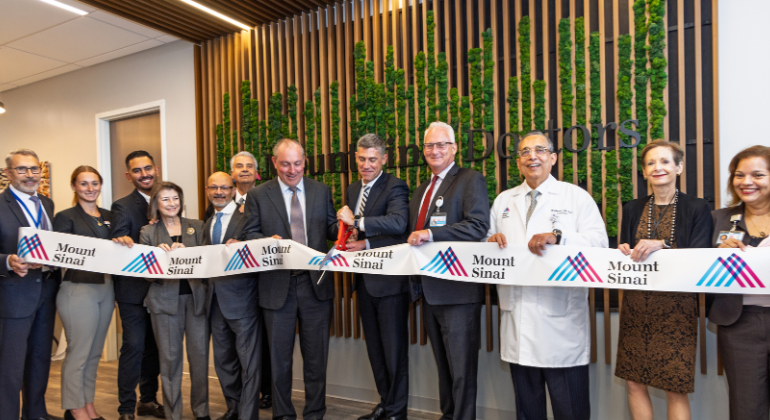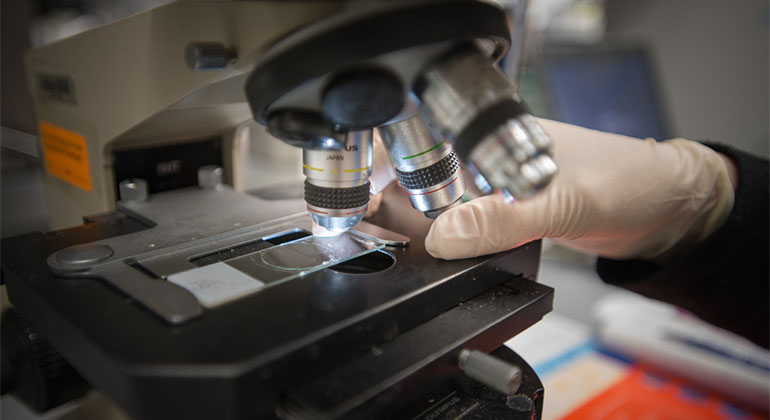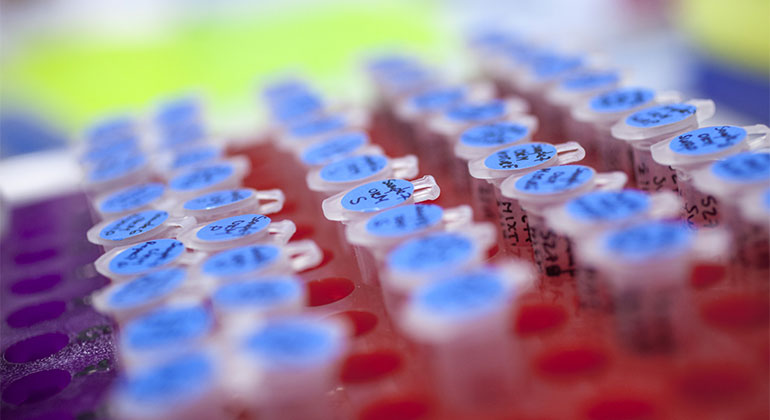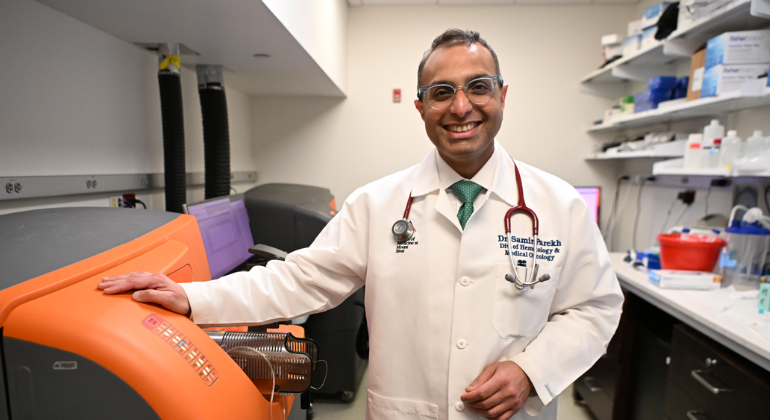Test Predicts Response to Early Treatment for Dangerous Complication of Stem Cells Transplants Used in Leukemia Patients
Findings Could Guide More Precise Treatment of Graft Versus Host Disease
A new test may reveal which patients will respond to treatment for graft versus host disease (GVHD), an often life-threatening complication of stem cell transplants (SCT) used to treat leukemia and other blood disorders, according to a study led by researchers at the Icahn School of Medicine at Mount Sinai and published online today in the journal Lancet Haematology and in print in the January issue.
Patients with fatal blood cancers like leukemia often require allogenic stem cell SCT to survive. Donor stem cells are transplanted to a recipient, but not without the risk of developing GVHD, a life-threatening complication and major cause of death after SCT. The disease, which can be mild to severe, occurs when the transplanted donor cells (known as the graft) attack the patient (referred to as the host). Symptom severity, however, does not accurately define how patients will respond to treatment and patients are often treated alike with high-dose steroids. Although SCT cures cancer in 50 percent of the patients, 25 percent die from relapsed cancer and there remaining go into remission but later succumb to effects of GVHD.
“High dose steroids is the only proven treatment for GVHD,” said James L. M. Ferrara, MD, DSc, Ward-Coleman Chair in Cancer Medicine Professor at the Icahn School of Medicine at Mount Sinai, Director of Hematologic Malignancies Translational Research Center at Tisch Cancer Institute at Mount Sinai. “Those with low-risk GVHD are often over-treated and face significant side-effects from treatment. Patients with high risk GVHD are undertreated and the GVHD progresses, often with fatal consequences. Our goal is to provide the right treatment for each patient. We hope to identify those patients at higher risk and design an aggressive intervention while tailoring a less-aggressive approach for those with low-risk.”
Dr. Ferrara, along with a multi-center team of researchers, developed and tested this new scoring system using almost 500 patient blood samples with newly diagnosed GVHD in varying grades from two different centers. They used three validated biomarkers TNFR1, ST2 and Reg3α to create an algorithm that calculated the probability of non-relapse mortality (usually caused by GVHD) that provided three distinct risk scores to predict the patient’s response to GVHD treatment.
The acid test was to evaluate the algorithm in a validation set of 300 additional patients from twenty different SCT centers throughout the US. The algorithm worked perfectly, and the cumulative incidence of non-relapse mortality significantly increased as the GVHD score increased, and so the response rate to primary GVHD treatment decreased.
“This new scoring system will help identify patient who may not respond to standard treatments, and may require an experimental and more aggressive approach,” said Dr. Ferrara. “And it will also help guide treatment for patients with lower-risk GVHD who may be over-treated. This will allow us to personalize treatment at the onset of the disease. Future algorithms will prove increasingly useful to develop precision medicine for all SCT patients.”
In order to capitalize on this discovery, Dr. Ferrara has created the Mount Sinai Acute GVHD International Consortium (MAGIC) which consists of a group of ten SCT centers in the US and Europe who will collaborate to use this new scoring system to test new treatments for acute GVHD. Dr. Ferrara and colleagues have also written a protocol to treat high-risk GVHD that has been approved by the FDA.
Co-collaborators included University of Michigan, University of Regensburg, and the Blood and Marrow Clinical Trials Network.
The study was supported by grants from the National Cancer Institute; the National Heart, Lung, and Blood Institute, the National Institute of Allergy and Infectious Diseases, the Doris Duke Charitable Fund, the American Cancer Society, and the Judith Devries Fund.
About the Mount Sinai Health System
Mount Sinai Health System is one of the largest academic medical systems in the New York metro area, employing 48,000 people across its hospitals and more than 400 outpatient practices, as well as more than 600 research and clinical labs, a school of nursing, and a leading school of medicine and graduate education. Mount Sinai advances health for all people, everywhere, by taking on the most complex health care challenges of our time—discovering and applying new scientific learning and knowledge; developing safer, more effective treatments; educating the next generation of medical leaders and innovators; and supporting local communities by delivering high-quality care to all who need it.
Through the integration of its hospitals, labs, and schools, Mount Sinai offers comprehensive health care solutions from birth through geriatrics, leveraging innovative approaches such as artificial intelligence and informatics while keeping patients’ medical and emotional needs at the center of all treatment. The Health System includes approximately 9,000 primary and specialty care physicians and 11 free-standing joint-venture centers throughout the five boroughs of New York City, Westchester, Long Island, and Florida. Hospitals within the System are consistently ranked by Newsweek’s® “The World’s Best Smart Hospitals, Best in State Hospitals, World Best Hospitals and Best Specialty Hospitals” and by U.S. News & World Report's® “Best Hospitals” and “Best Children’s Hospitals.” The Mount Sinai Hospital is on the U.S. News & World Report® “Best Hospitals” Honor Roll for 2024-2025.
For more information, visit https://www.mountsinai.org or find Mount Sinai on Facebook, Twitter and YouTube.

Mount Sinai Health System Expands Care in Staten Island
Nov 04, 2024 View All Press Releases
The Tisch Cancer Institute Emphasizes Critical Role of BRCA Testing For All Genders
Oct 14, 2024 View All Press ReleasesMount Sinai’s Staten Island Cancer Center Moves to New Site
Nov 09, 2023 View All Press Releases
Diabetes May Accelerate Blood Cancer Growth, Yet Survival Outcomes Differ by Race
Sep 29, 2023 View All Press Releases
Mount Sinai Launches Institute for Regenerative Medicine
Apr 24, 2023 View All Press Releases
Researchers Find Treatment Options for Patients Whose Blood Cancer Relapses After CAR-T
Nov 04, 2022 View All Press Releases
Study Identifies New Gene That Drives Colon Cancer
Oct 14, 2022 View All Press Releases

